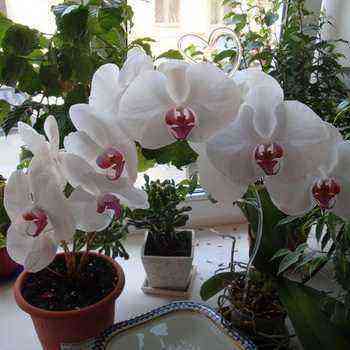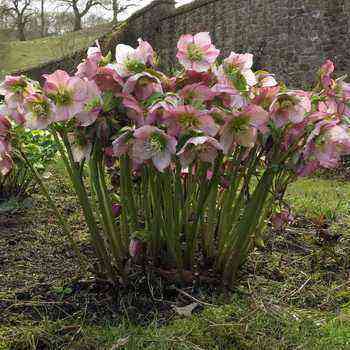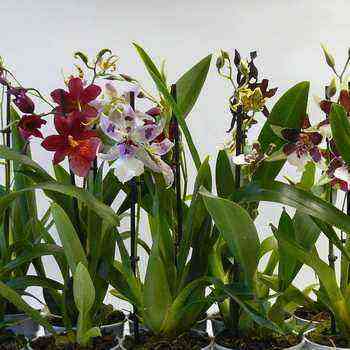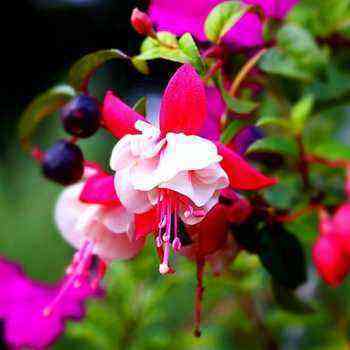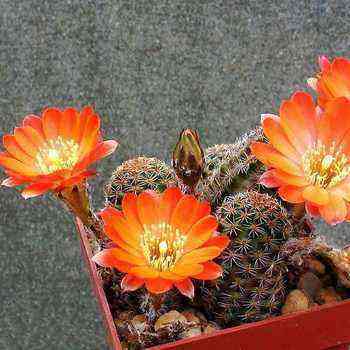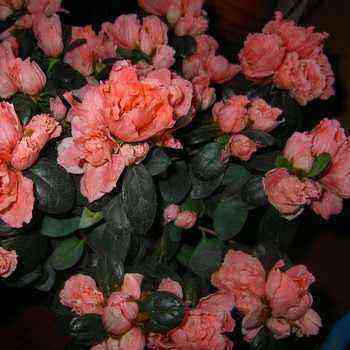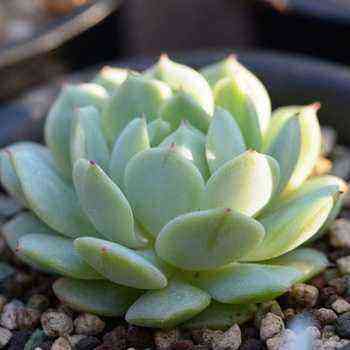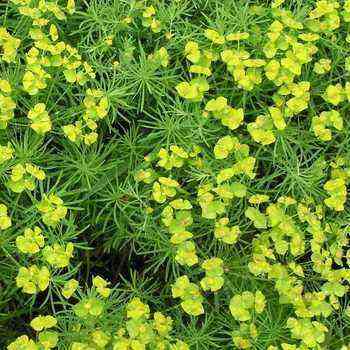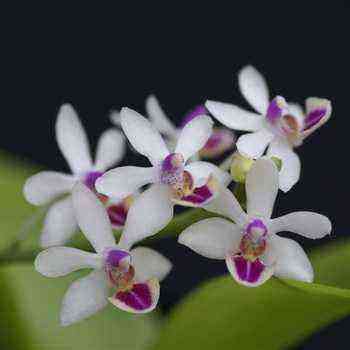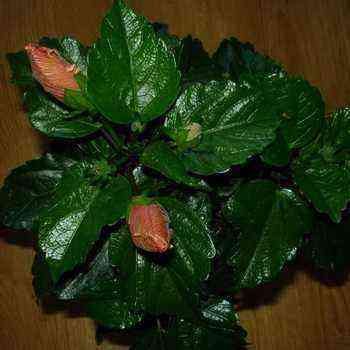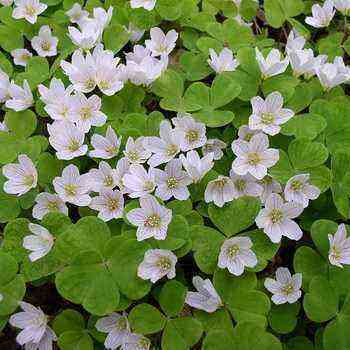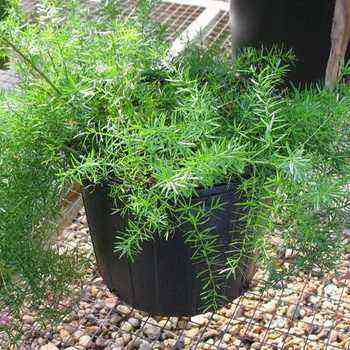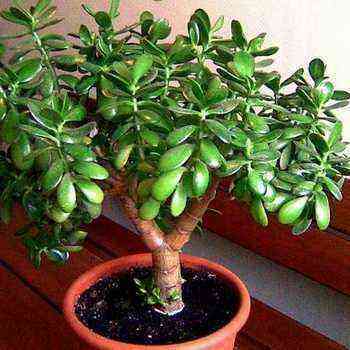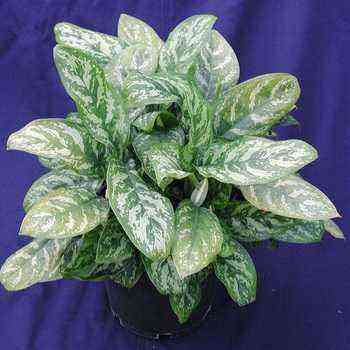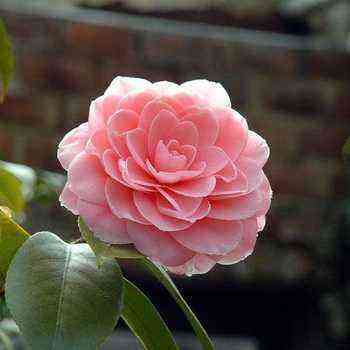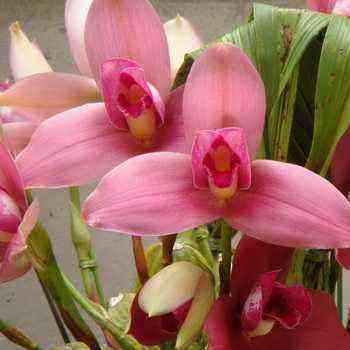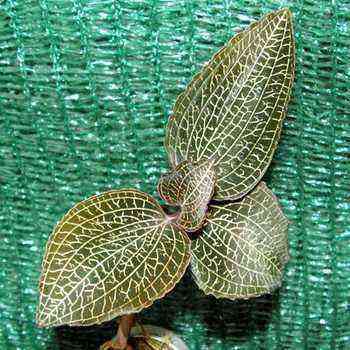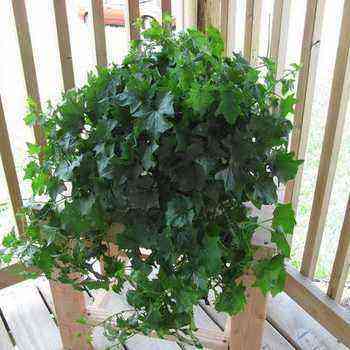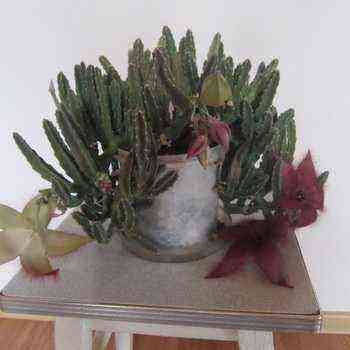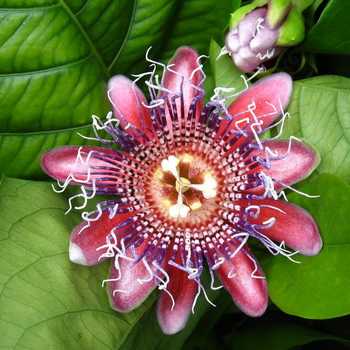 Passion flower – one of the most beautiful lianas growing in a subtropical climate. When growing passionflower at home, it is either placed in hanging pots and the branches are left to cascade, or they are twisted around a support, forming a decorative bush with exotic flowers. This plant is used for medicinal purposes, as well as in the manufacture of cosmetics.
Passion flower – one of the most beautiful lianas growing in a subtropical climate. When growing passionflower at home, it is either placed in hanging pots and the branches are left to cascade, or they are twisted around a support, forming a decorative bush with exotic flowers. This plant is used for medicinal purposes, as well as in the manufacture of cosmetics.
Passionflower (Passiflora) belongs to the Passionflower family. Homeland – America, Asia, Australia, Madagascar.
This is an evergreen climbing vine of the Passiflora family, growing in Paraguay, Brazil, Argentina, on the island of Madagascar.
Can plants protect themselves from pests? It turns out that some can. In the tropical forests of America, one of the most interesting plants in the world grows – blue passionflower, or passion flower, with large original flowers of an unusual structure. Drawings of this plant came to Europe from the New World as early as 1610. Spanish missionaries who came to America for Columbus saw in some parts of the flower “an instrument of the passion of God.” Hence its Latin name – passionflower or Russian – passionflower. Passionflower looks like a painted miracle, this unusual flower has attracted the attention of not only botanists, but also artists. His image is found in the paintings of famous masters of the XNUMXth – XNUMXth centuries.
But the most interesting thing is how passionflower learned to defend against its worst enemies. In the tropics of Brazil, where this plant lives, there is also one species of butterflies that lay eggs only on young tender shoots of this vine. Caterpillars hatch from the eggs and eat the entire shoot. But several butterflies will never lay eggs on one shoot, since a large number of caterpillars will not have enough food. Passionflower has learned to imitate the eggs of this butterfly. From the leaves of a young shoot, droplets of a special enzyme are released, which, when solidified, very much resemble small yellow testicles. The deceived butterfly, seeing that the place has already been taken, flies away to look for a free vine, and the shoot of passionflower continues to quickly make its way to the sun. So in nature there is an eternal struggle for survival, in the process of which various tricks are invented.
Description of the passionflower plant
Depending on the species, passionflower has either a rounded or ribbed lignified stem, on which alternate, dissected, three to five to nine-fingered, wide (from 10 to 20 cm) leaves, painted in a beautiful bluish-green color, grow. In the places where the leaves are attached to the petiole, there are two glands each. From the axils of the leaves peep out small unbranched antennae that cling to the support. During flowering, the plant is decorated with large, bright, single axillary flowers. According to the description, passionflower flowers resemble stars. Sepals and petals are white or pink. Between the perianth and the stamens there is a special formation – a crown of numerous slightly wavy, at the base of purple threads, brightly colored in blue or blue.
Look at the photo – passionflower flowers with a diameter of up to 8-10 cm, very beautiful, fragrant, but short-lived:

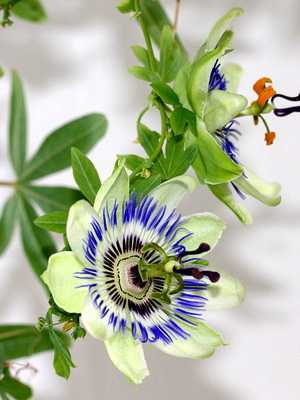
Passiflora fruits are different. They can be yellowish-orange or bluish, ovoid (up to 6 cm) or round (up to 2,5 cm in diameter) in shape.
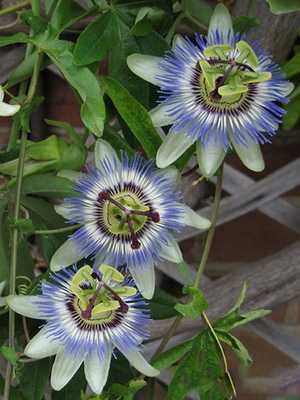
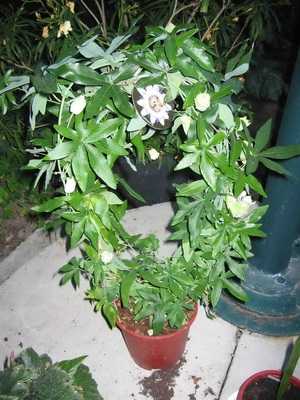
In passionflower, blue flowers exude a light, pleasant aroma. The perianth of each flower is surrounded by many stamens. In some species, such as passionflower blue, there are many slightly wavy, bright blue or blue filaments between the perianth and stamens.
There are more than 500 species of lianas in nature. In indoor floriculture, blue passionflower and three-striped passionflower are cultivated.
Blooms profusely from June to September.
Passionflower blue, passionflower – has an energy of +20 to +35 AU, depending on the development of the plant. Plants have the greatest energy, which all summer before the autumn frosts grew in the open ground (without pots, passionflower is planted directly in the ground or in a large container with earth on the street). Anyone who has seen blooming passionflower will remain her loyal fan forever. Its flower is similar to the order, so it has another name – “cavalier’s star”, blooming passionflower increases the energy given to people. Its fruits are edible, very tasty and healthy.
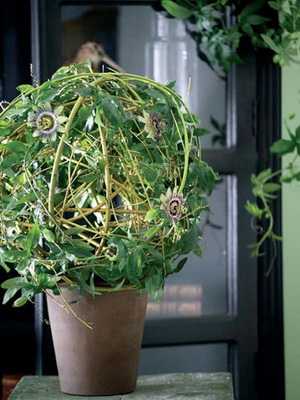
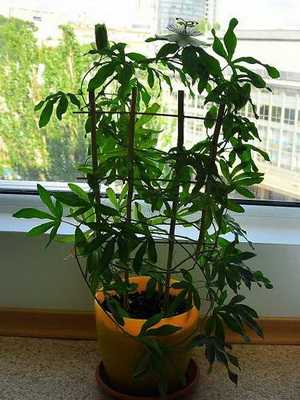
Passionflower growing in the house relieves nervous tension and stress with its energy, soothes, improves mood and sleep. A flowering plant evokes pleasant dreams. The British even release wallpaper depicting flowering and fruiting passionflower vines to bring healthy energy into the house.
For medicinal purposes, pieces of passionflower leaves, stems, tendrils, buds, flowers and unripe fruits about 1 to 7 mm in size are used.
For medicinal purposes, it is used in the form of tea for insomnia, nervousness, epilepsy, tetanus, it gives stability to blood pressure. Perfectly acts as a sleeping pill together with valerian and St. John’s wort, which is especially recommended for people suffering from insomnia, increased excitability, irritability, weakness, as well as during menopause, with chronic alcoholism.
Passionflower also has an anti-inflammatory effect, removes painful sensations in rheumatism. With the help of a liquid extract from the leaves and stems, it is possible to treat chronic alcoholism.
Medicines based on patiflora are widely recognized in the USA, Latin America, and various countries of Western Europe. Several types of this plant are used in the perfumery industry.
Before starting self-treatment, be sure to consult your doctor.
Passionflower cavalier star and other plant species
Very spectacular views:
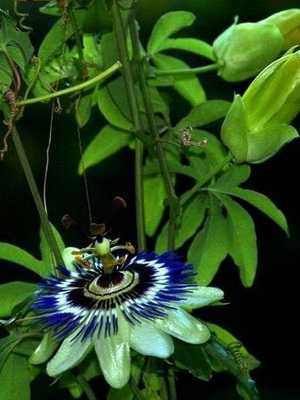
Passionflower blue (P. caerulea)
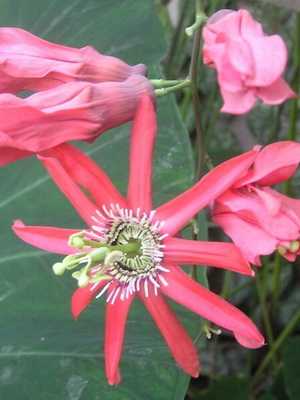
Passionflower brush — (P. racemosa)
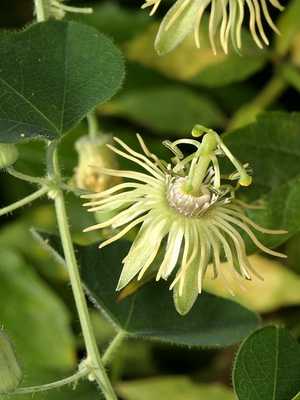
Passionflower lemon yellow (P. citrina)
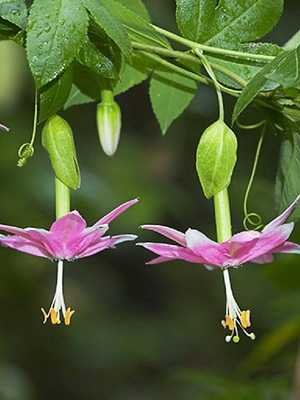
The most tender passionflower (P. mollissima)
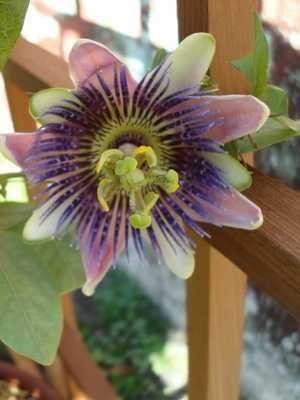
Blue-winged passionflower (P. alatacaerulea)
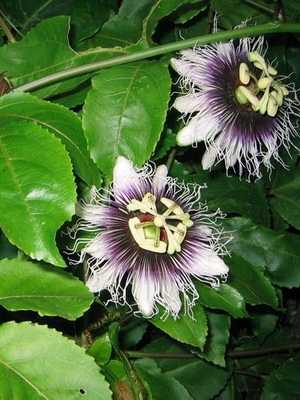
Passionflower edible (P. edulis)

Passionflower flesh colored (P. incarnata).
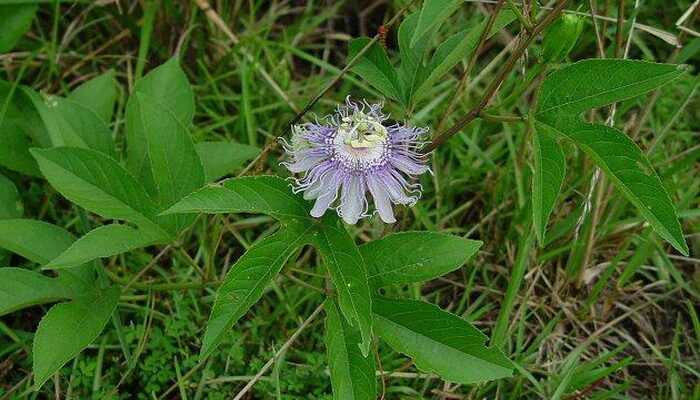
Passiflora incarnate passiflora incarnata l… Synonyms: meat-red passionflower, meat-red passionflower, cavalier star.
Perennial climbing liana of the Passifloraceae family, reaching a height of 6 m. Stem, climbing trees or creeping, smooth, rounded with alternate, long-petiolate, deeply divided leaves. Leaves are leathery, green above, grayish below. Flowers of this passionflower are single, about 5 cm in diameter, on long stalks, pale-lilac petals. The fruit is edible, berry-like, juicy, yellow-orange at maturity, black seeds. The homeland of passionflower is North America, it was first brought to Sukhumi in 1840-1850. as an ornamental plant.
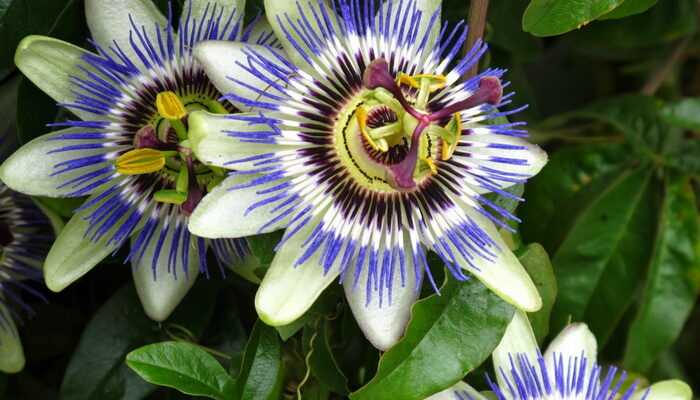
Passionflower blue (R. Caerulea)… The homeland of this plant is Brazil, Paraguay Argentina.
There is evidence that this plant was cultivated in the early 16th century. Climbing vine with woody stems that cling to the support with antennae.
The leaves are whole-cut, have a slightly bluish color. Antennae are simple, unbranched, located in the leaf axils. When flowering, it gives single flowers of white or pink color, with a slight pleasant smell. Between the perianth and stamens there is a special formation in the form of a crown of numerous bases of purple filaments. The fruit has a yellowish-orange color in the form of an egg-shaped berry.
For successful flowering, old shoots must be cut out, and in the summer, shoots appearing at the base of the plant should be removed to improve the nutrition of flowering shoots. If in winter the leaves fall off in a cool room, the shoots are cut off; new young shoots will develop in the spring.

Passiflora is used for vertical gardening of balconies, terraces, large rooms and in winter gardens. This plant requires support: nylon mesh, bamboo lattice, rail. If the apartment has a beautiful view from the window, then this vine will help you to “arrange” the frame.
As you can see in the photo, home-grown passionflower will make your home even more elegant and comfortable:
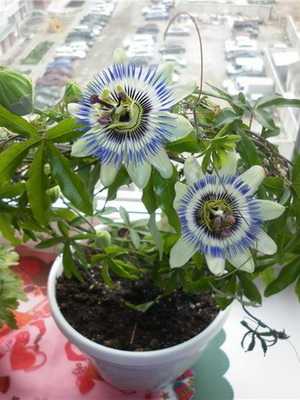
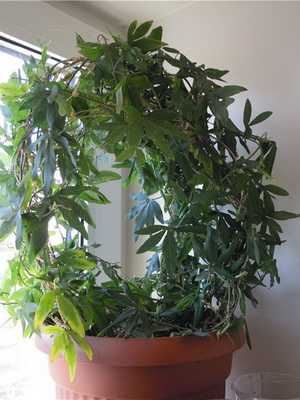
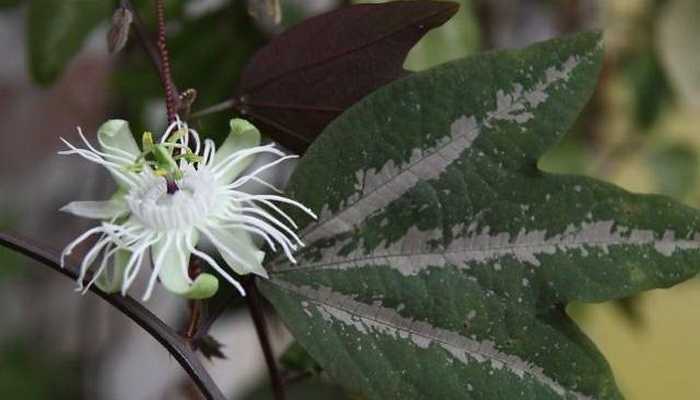
Passionflower three-lane (R. Trifasciata)… Homeland – Pierre.
Unlike the previous species, it has a silvery stem, on which there are three-lobed olive-green leaves with lighter stripes along the main veins, on the lower side of the leaf – purple-purple. The flowers are smaller, greenish or yellowish-white. Fruits are round, up to 2,5 cm in diameter.
Next, you will learn how to grow passionflower at home and how to propagate the plant.
How to grow indoor passionflower and plant propagation (with video)
Passionflower blooms well in warm sunny rooms, in cool, non-sunny rooms, it turns into an ornamental deciduous plant. In winter, when growing passionflower, you need to provide the plant with enough light, and also make sure that the plant does not overcool.
Air circulation is also very important and helps to avoid rotting and fungal diseases. If possible, use a small fan at all times, both in winter and summer.
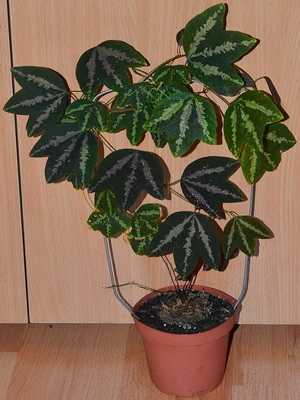

Accommodation. The home flower of passionflower is thermophilic and photophilous, it needs a bright, sunny room. For normal growth, passionflower should be placed in a bright, sunny room without drafts. However, in winter, it is advisable to place the plant in a cool room with a temperature of at least 4-5 ° C. In summer, it is useful to take it out into the air (in a slightly shaded place).
Rest period. In autumn, indoor passionflower should be prepared for rest: cut the lashes, leaving only shoots 20-30 cm high. In winter, watering is reduced, but the earthen coma should not be allowed to dry out. The soil should always be slightly damp.
The soil. The land is preferable poor (as for cacti), with good drainage. Recommended mixture: 1 part cactus soil, 1/2 part sand, 1/2 part fine expanded clay.
A suitable substrate is sod and compost soil, humus and peat (1: 1: 1: 1).
Passionflower is an easy-to-care plant. It is enough to adhere to the rules: do not flood, do not allow the soil to dry out until the leaves wither (this can lead to the dropping of buds and leaves), a lot of sun and feeding with a minimum nitrogen content.
Watering the plant. When caring for a passionflower flower, watering is required abundant in summer, sharply limited in winter, but the soil lump should always be slightly damp. In winter, the plant is often sprayed.
Watering should be done as the soil dries up, preferably daily in summer, and every 3–7 days in winter (depending on the size of the pot, temperature and humidity). Rule of thumb: the cooler, the drier. Spraying has a very beneficial effect on plants, increasing the breathable surface of the leaf and encouraging flowering.
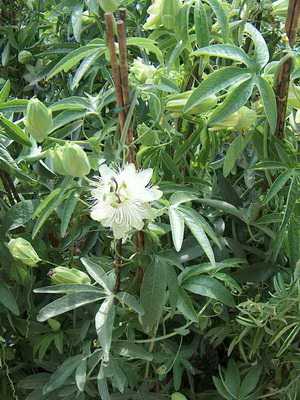

The young flower buds of the indoor passionflower plant often fall off from indoor or greenhouse plants. Sometimes this is due to the high dryness of the air or due to the red spider mite, which loves dry air. To care for passionflower correctly, as advised by experienced growers, it is imperative to spray the top and bottom of the leaves or use a moisturizer. This will help you have healthy plants. If the soil in the pot begins to dry out quickly, place it on a pallet of damp sand and water the sand when watering the plant.
Top dressing. For a home-grown passionflower, weekly feeding is useful during the growing season. However, excess fertilization leads to foliage build-up and cessation of flowering.
Transfer. Young plants should be transplanted annually in spring, and adults should be transplanted every three years into a soil mixture consisting of equal parts of peat, humus and sod land.
Pruning. In the fall, the lashes must be cut at a height of 20-30 cm.When caring for a passionflower flower at home, pruning should be done extremely carefully and only if there is a really urgent need (for example, the plant has grown too large and does not fit on the windowsill).


Breeding. Cuttings at a temperature of 20-21ᵒС in spring and summer, rarely seeds. For propagation of passionflower, you can cut off a piece of the stem, even with one leaf, and root it in water.
Around the gazebo, you can plant cuttings or young plants of passionflower at the end of May – in a month the whole gazebo will be entwined with an exotic liana, and you will get a wonderful resting place that will fill you with energy and self-confidence.
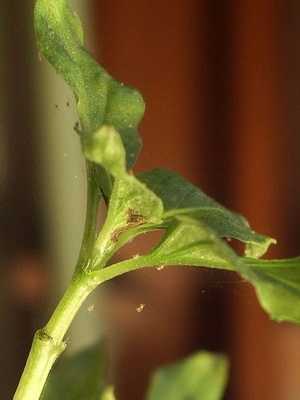

The main pests that interfere with the cultivation and care of passionflower are spider mites and thrips. Excessive soil moisture in the cold season leads to root rot.



